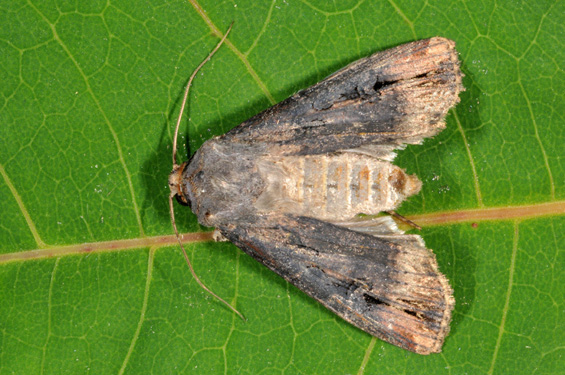
Common Name: Black cutworm
Scientific Name: Noctuidae: Agrotis ipsilon
Status: pest of field and garden crops, and turfgrass
Damaging Stage: caterpillar
Biology: Black cutworms are gray to nearly black with a distinct pale stripe extending down the center of the back. Newly hatched larvae are approximately � inch long and reach 2 inches when they are fully grown.
Pupae and adults overwinter in the soil. Adults cannot survive the winter in northern United States but they return each year from the south via strong air currents and storms. Females lay their eggs in cracks in the soil. The eggs hatch within a week, then the larvae feed on host plants for about a month.
Injury: Severe damage usually does not occur until black cutworms reach the fourth instar. Early instar cutworm feeding involves cutting small irregular holes in plant leaves. As the larvae mature, black cutworms sever the plants at the soil line. Grass plants, including corn and turfgrass, are most susceptible to cutworm damage. Multiple generations of cutworms may occur beginning very early in the spring.
Action Threshold: Treatment for field corn is necessary when 3 percent or more of the plants are cut and larvae are still present. In highly manicured turfgrasses, simply finding feeding caterpillars may be cause for action.
Management: Chemical controls are most successful and economical when used as a rescue treatment, after live larvae are found.
|